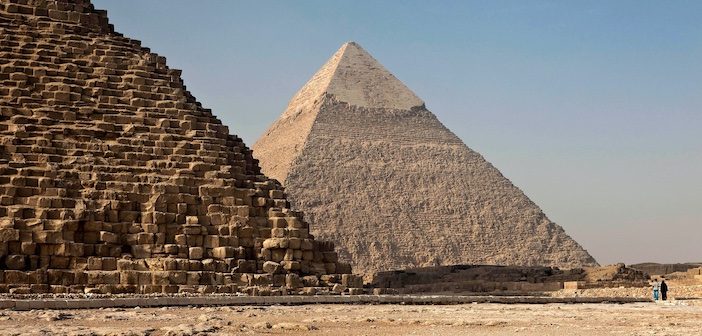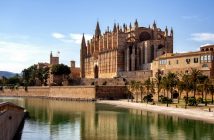In recent years, the family Lawrence have taken it upon themselves to eschew the fancy summer breaks and escape home shores at Easter instead. And, year on year, each destination seems to set the bar ever higher where the little nest of vipers is concerned. What could compete with Australia, or the Maldives? How do you impress a 9-year-old with a burgeoning taste for adventure and the finer things?
Two things settled that debate this year. First, selecting somewhere to include a little beach time, but then to combine it with something cultural, something educational for our little nose miner. And, so, with her having recently covered the subject at school, putting on a class presentation dazzling parents with facts and figures, we had our destination. We shall go to Egypt.
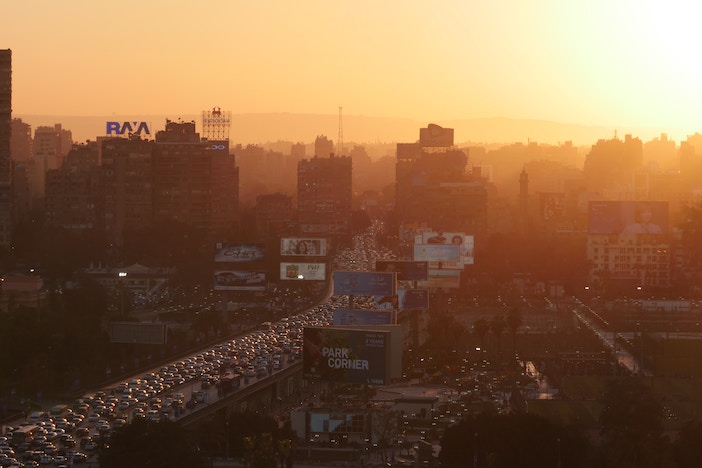
Photo by Tienko Dima (courtesy of Unsplash)
It began in Cairo, and an assault on the senses the moment we touched down. Sucked into the city on a relentless flow of traffic, like a stream of flotsam coursing down rapids, motorbikes weaving between vehicles, cars changing lanes with little regard. Amid the maelstrom, I was intrigued by how many references there are to the ancients; on posters, statues and monuments, even graffiti. As we entered downtown, this is Cairo as you’d expect. Old colonial architecture, cars and pedestrians jostling for supremacy, the buzz and dazzle of over-lit shopfronts, and the constant cacophony of car horns. It’s vibrant, exotic – and exciting.
We turn onto the corniche for our first sight of the Nile and our destination; the Four Seasons. It’s in the ‘Garden District’, amid other notable properties and embassies, and carries itself with a dignified grandiosity. Our suite, sixteen floors up, is, as you might expect, more of an apartment, benefitting from a gargantuan balcony overlooking the river. Other Four Seasons’ touches are all there; the bed, designed for supreme comfort (they spend serious time researching this) graced with Egyptian cotton, naturally. And so much attention to detail; cable ties for your phone charger, a bookmark left on your bedside table (evidently having spotted a book lacking one), a child’s robe added to the wardrobe.
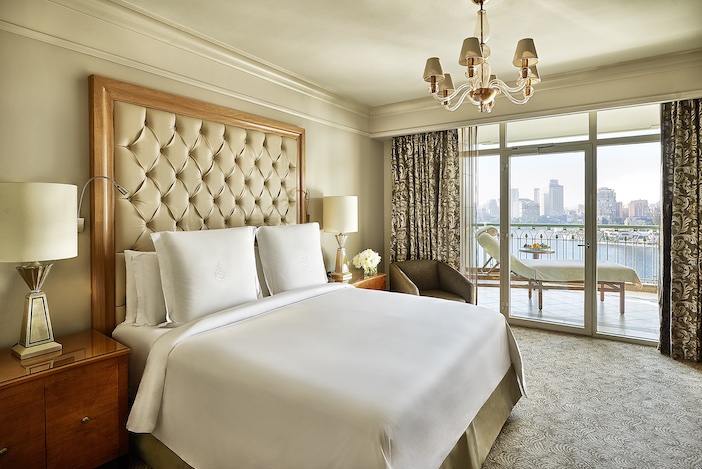
And here we were, this city of ancients-meets-modern metropolis at our disposal, and with a number of suggestions from the concierge. A card in the room proposed the famous 1,000-year-old market, particularly at night, to get the benefit of the lanterns, the sounds, the smells. Then there was the citadel tour, or a visit to the Coptic district, but this first morning we needed to discover, and set off on foot along the corniche to Tahrir Square – the Tahrir Square – and the Egyptian Museum.
A rust-coloured kasbah from outside, inside the museum has the feeling of a warehouse; objects ranging in size from gargantuan granite statues to sarcophogi, appear to have been dumped in, gathering dust, inscriptions fading. But it all adds to the sense of authenticity. After all, how do you organise 3500 years of history, with artefacts so numerous as to become diluted in significance. But, among them, to quote Howard Carter, are some wonderful things.
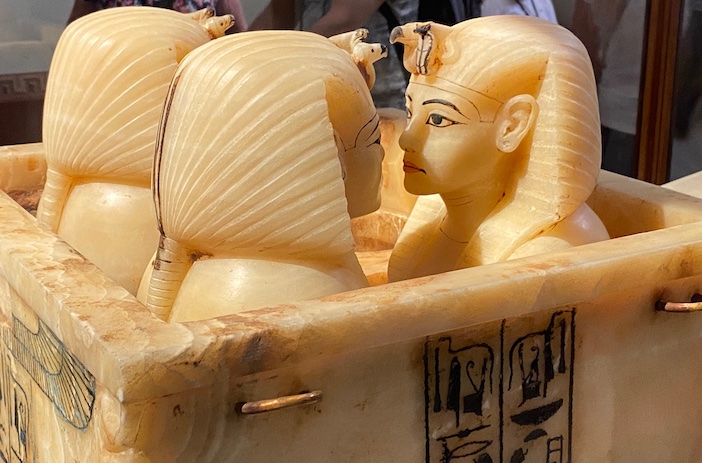
Tutankhamun’s alabaster canopic jars
Upstairs, cabinet upon cabinet of coffin, all beautifully painted and inscribed, almost too many to provide descriptions for. Further rooms showed dirty, faded displays of ushtabis, statuettes, faience trinkets and jewellery, and then glass cases of mummies, notable particularly for the thin strips of cloth, wound into geometric patterns to wrap the cadaver. It’s as creepy as it is fascinating. Our little one was entranced.
But all this pales into the main reason to visit: Tutankhamun. And, here, it’s beautifully exhibited. Of the multitude of objects recovered from his tomb there are 300-odd on display here, from individual items of jewellery to all the recognisable artefacts you might recall from historic pictures. Most notably, seeing that death mask is, surely, a bucket list moment. It makes the hairs on the back of your neck stand up. I couldn’t quite believe I was actually there, face-to-face with that image from countless photographs; an image that has symbolised ancient Egypt since childhood. I could have stared at him for hours.
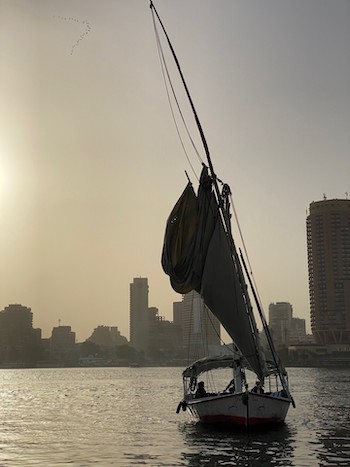 Following the daytime heat, we’re thankful for a brief respite in the form of a sunset felucca sail, escaping the heat of the day, aided by a soothing breeze across the water. There are various options for boat tours, organised by the concierge, and from right outside the hotel, but there’s nothing like going under sail; that angular, arcing canopy above, cutting a graceful course about the water, tacking upstream and back for an hour, listening to the sounds of the city in the distance, the creaking of rigging and lapping water adding a pleasant overture to the now distant chorus of car horns.
Following the daytime heat, we’re thankful for a brief respite in the form of a sunset felucca sail, escaping the heat of the day, aided by a soothing breeze across the water. There are various options for boat tours, organised by the concierge, and from right outside the hotel, but there’s nothing like going under sail; that angular, arcing canopy above, cutting a graceful course about the water, tacking upstream and back for an hour, listening to the sounds of the city in the distance, the creaking of rigging and lapping water adding a pleasant overture to the now distant chorus of car horns.
We circle a curious object in the middle of the river; “Fountain,” our guide says in broken English. Like some dilapidated monolith up close, it’s far from it, and serves as a precursor to dinner over an aperitif in the bar, overlooking the river, when it suddenly erupts 100 metres into the air amid a dazzling light display.
Our visit coincides with Ramadan and the hotel’s signature restaurant, Zitouni, serving traditional Egyptian and Levant fare, runs a buffet during Iftar the like of which I’ve rarely seen. It’s clearly a draw as the restaurant is buzzing, every table taken, and a hubbub of atmosphere. I thought I had a pretty good knowledge of Middle Eastern dishes, and there are plenty now widely available in the UK, but this was in a different league.
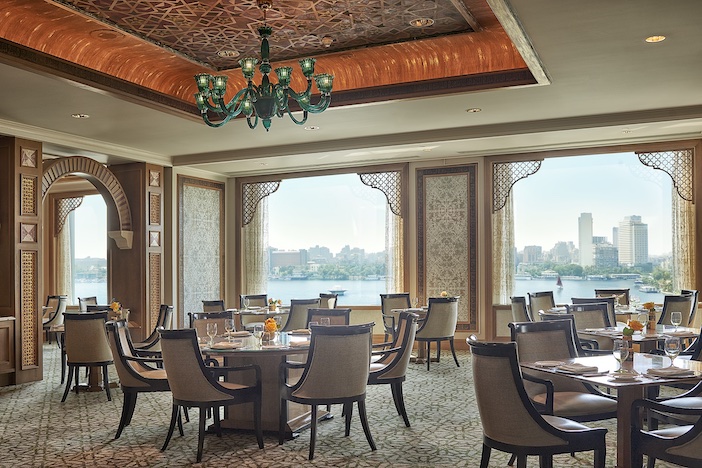
Among the fatoush and baba ganoush, the cold mezze of moutabal, besara and makdous – at one point my adventurousness gets the better of me and biting into what I thought was a yellow tomato in an appealing dressing turns out to be a pickled lemon. Hot dishes included great platters of roasted veal leg and lamb ouzi, with makanek, sambousek pastries and other hot mezze piled on another counter. I was convinced I was doing it wrong, mixing dishes I shouldn’t be, and covering others in sauces that weren’t. A ladleful of mulukhiyah, for example, I assumed was a sauce, proved to be a spinach-like vegetable soup.
When it comes to discoveries, however, there’s one thing you’d come to Cairo to see. From downtown to Giza, we go against rush hour traffic through the city, passing mile upon mile of half-built apartment blocks, until we reach the end of town, a stretch of desert between Cairo and Giza, and there we get our first sight of them, rising up from the desert. They almost look superimposed onto the landscape. We circle round, across the top of Giza town, which is, our guide tells us, becoming bigger than Cairo itself, and in seemingly random and impractical stages of construction. At one point, an escalator has been added to a road bridge, crossing to nothing.
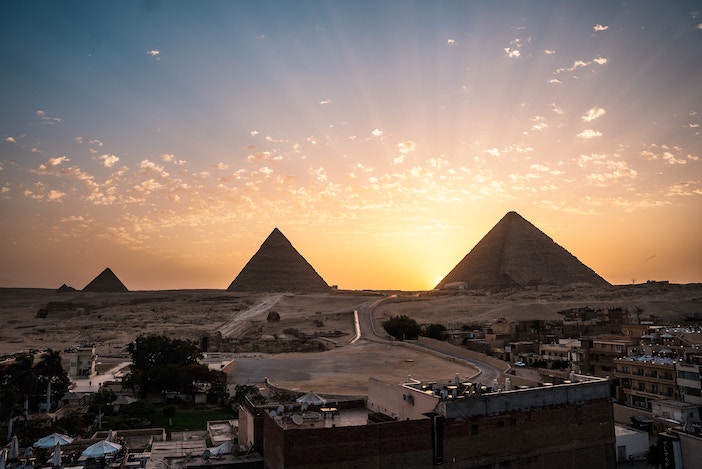
The pyramids of Giza (photo by Ruben Hanssen, courtesy of Unsplash)
As we get nearer, you get a sense of them, they are, quite literally, monumental. It’s another pinch yourself moment. There’s a throng, as might be expected, coaches spill groups into an ever-pooling crowd around the ticket office, but here we are, facing the pyramids. Remarkably, you can still climb on them – part way, at least, to the entrance to the tomb – though up close the irregularity of the stones begins to show and does make it challenging.
Better yet, you can go inside, to the burial chambers. Considering these are cramped and claustrophobic, we elect the middle pyramid, Khufu’s son’s, being 15 minutes in-and-out, doubled-over in a human chain. It’s a wiser choice; the moment you enter, it immediately feels unsettling, and the deeper you go in, the closer the air becomes. Countless people entering a breathless, unventilated chamber, gives the air a sour, stale, dankness. It’s enough to dash in and dash out, and is a relief to get back into the fresh air, in spite of the heat.
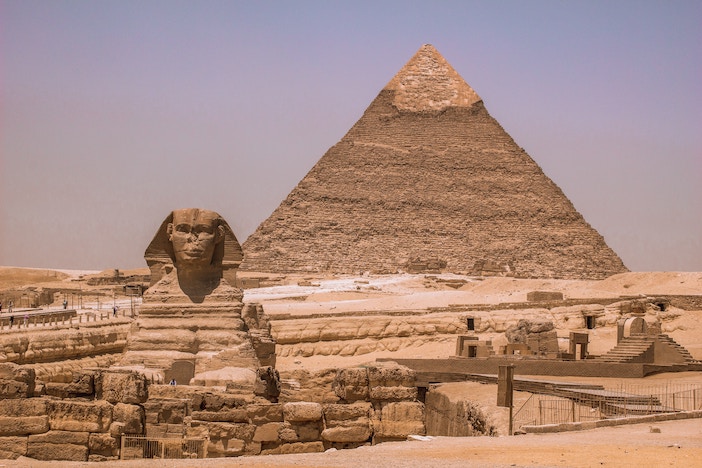
Photo by Alessandro Zanini (courtesy of Unsplash)
There’s much to see around the pyramid complex, the viewing area for that definitive photo, hawkers, market stalls and camel guides, and, of course, there’s the Sphinx and temples, not to mention the highly anticipated opening of the antiquities museum. Our guide, Haled, patient, magnanimous, with an entertaining fascination for Jane Austen, was brimming with detail. I asked after her education; Egyptology, history, English and archaeology. Seven years in total, and testament to why having a tour guide is an essential part of the visit.
All too soon, Cairo is coming to a close. For our final evening, I ask Haled for something quintessentially authentic for dinner, and she points me in the direction of Abou Tarek, apart from anything being the most gaudily-lit building I’ve ever seen. Every cab driver knows it, the Four Seasons’ doormen give me a quizzical look that we should wish to try this, but if you want an immersive, local experience, it’s worth a visit. They serve one thing: koshari. An Egyptian staple of rice, lentils and pasta in a tomato sauce, it’s presented here fast-food style, where the waiters put on an entertaining show for the Instagram cameras.
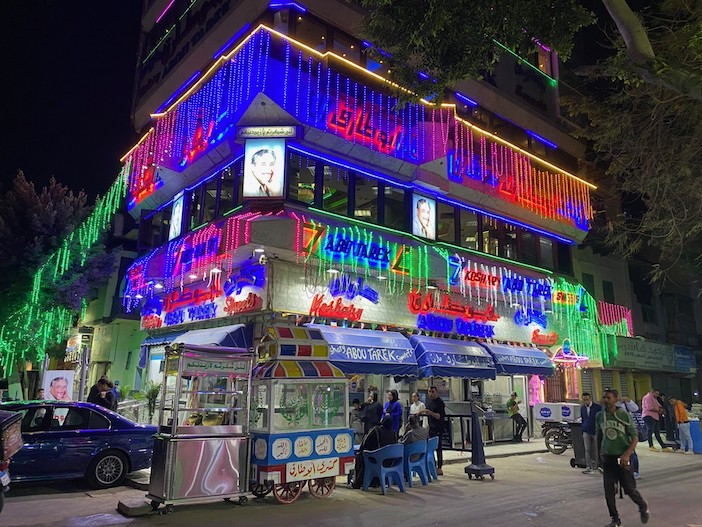
Breakfast at the hotel is a little more civilised, with a buffet as you might expect from the Four Seasons; a panoply of pastries, fruit counter, even a honey menu (well, what would expect from a country where they found honey in the tombs of pharaohs), but with local touches, including foul medames or Egyptian beans. Definitely one to spice up a full English. It was a breakfast to kick-start the day, to put it mildly.
Thus fuelled, it was on to the beach part of this Egyptian odyssey, accompanied as much by the woe of letting the Four Seasons treatment go as it was to welcome the excitement of our next destination, perhaps Egypt’s ‘best kept secret’ on a peninsula on the Red Sea…
To start your Egyptian adventure, including looking for ideas of what to see and do, visit the official Egypt Tourism website at www.egypt.travel.
For further information about Four Seasons Cairo at Nile Plaza, including details of dining options and room rates, please visit www.fourseasons.com.
Header photo by Ricardo Gomez (courtesy of Unsplash)

